SUMMARY
This is AI generated summarization, which may have errors. For context, always refer to the full article.
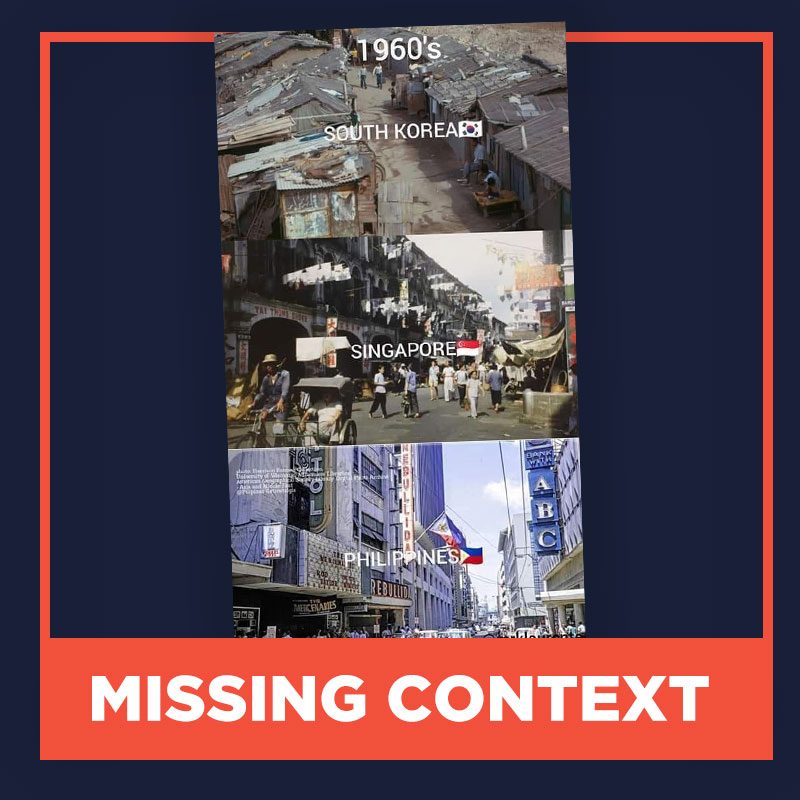
At a glance
- Claim: A comparison of photos in the 1960s of the Philippines, South Korea, and Singapore shows that the Philippines was richer than the two other countries during the administration of Ferdinand Marcos.
- Rating: MISSING CONTEXT
- The facts: The photos do not show the entire economic situation of the three countries. Data for gross domestic product and GDP per capita, two basic indicators of a nation’s economic growth, show that the Philippines was not ahead of South Korea and Singapore during the Marcos era.
- Why we fact-checked this: Multiple readers sent the claim for verification.
Complete details
Several Facebook pages claim that the Philippines was ahead of South Korea and Singapore in the 1960s, or during the administration of Ferdinand Marcos. The pages show a collage of photos taken in the 1960s, which supposedly proves that the Philippines was richer than the two other countries during that time.
The posts credit Marcos for the country’s supposed prosperity in the 1960s. They also claim that the Philippines only became poor after Marcos’ term ended.
The photo has been circulating on social media since May 2021. Rappler found at least four pages that posted the same claim. Several readers also emailed the graphic for verification.
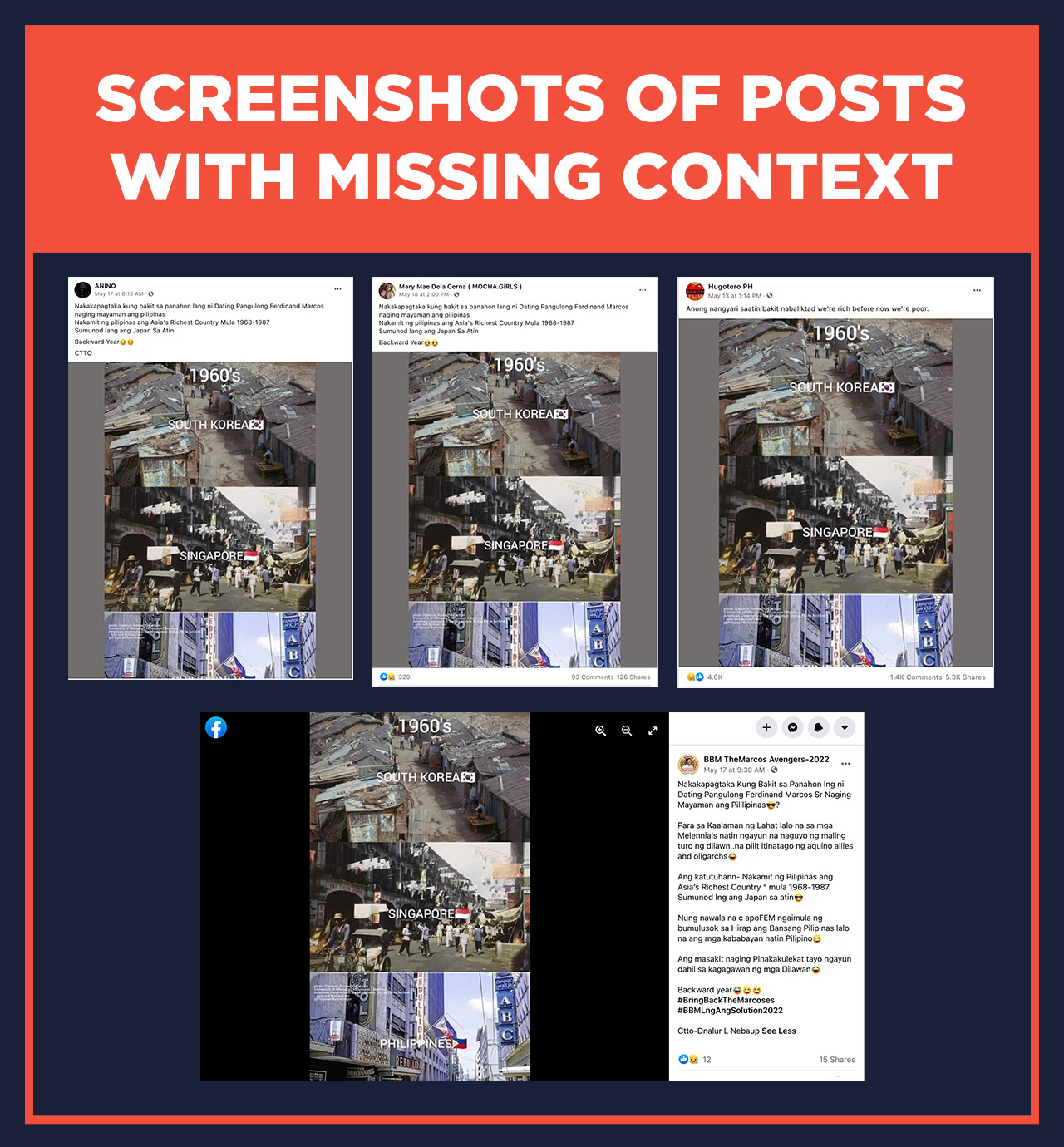
This is missing context.
The photo collage does not show the entire economic situation of the three countries. The countries’ gross domestic product and GDP per capita, two basic indicators of a nation’s economic growth, show that the Philippines was not ahead of South Korea and Singapore during the Marcos era.
Data from the World Bank show that the Philippines lagged behind South Korea and Singapore from 1966 until the end of Marcos’ term in 1986 in terms of GDP per capita or average income per person. The gap further widened after Marcos was ousted.
(click on the arrow to switch graphs)
In terms of GDP, or the total monetary or market value of all the finished goods and services within a country, it is true that the Philippines was ahead of South Korea and Singapore when Marcos was elected into office in 1965. However, South Korea overtook the Philippines by 1968. Since then, the Philippines was not able to surpass South Korea anymore for the whole duration of Marcos’ term.
The Philippines’ annual GDP growth also lagged behind both South Korea and Singapore for the most part of Marcos’ term. By 1984, the Philippines’ annual GDP growth rate plunged to -7.3%. It was the country’s worst economic contraction since World War II until the pandemic hit in 2020. (READ: Worst post-war GDP slump: Pandemic shrinks Philippine economy by 9.5% in 2020)
The economic setbacks during the Marcos administration gave the Philippines a hard time to catch up with its neighbors. Economist JC Punongbayan explained in 2016 that, based on data, it took an entire generation to recover from the negative consequences of Marcos’ economic policies and management.
Meanwhile, a reverse image search showed that the photos used in the posts with missing context were indeed taken in the three countries, but the periods during which they were taken were inconsistent.
Both the photos showing South Korea and the Philippines were taken in the 1960s. One was taken in Seoul, while the other was captured in Escolta Street in Manila. The photo of Singapore, however, is a stock photo of Sago Street that was taken in the 1950s.
In 2019, Rappler debunked a claim that the Philippines was the “richest country in Asia” during the Marcos administration. There were also false claims that the peso-dollar exchange rate during the Marcos regime was at P1.50 to P2 per dollar, and that the Philippine economy got worse only after Marcos was ousted. – Pauline Macaraeg/Rappler.com
Keep us aware of suspicious Facebook pages, groups, accounts, websites, articles, or photos in your network by contacting us at factcheck@rappler.com. Let us battle disinformation one Fact Check at a time.
Add a comment
How does this make you feel?
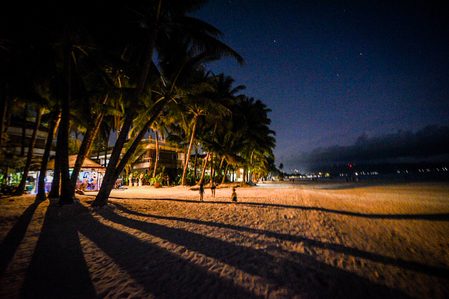
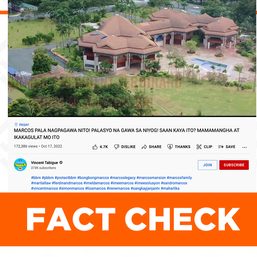
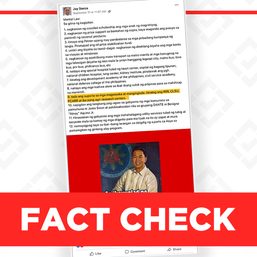

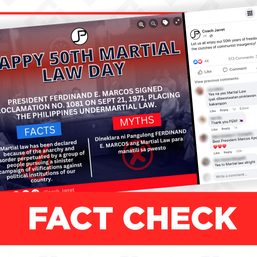
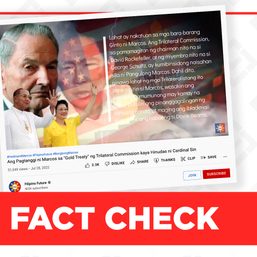
There are no comments yet. Add your comment to start the conversation.